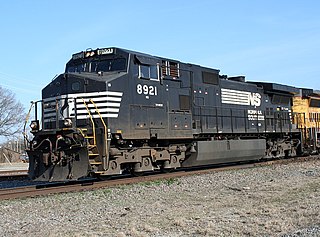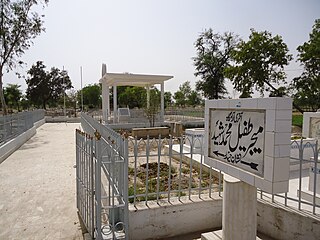This article needs to be updated.(March 2015) |
This is a list of annual world production. (Bold number is a list of countries producing commodity)
Contents
- Cement 3,400,000,000 tonnes in 2011
- Motor vehicle 84,141,209 in 2012
This article needs to be updated.(March 2015) |
This is a list of annual world production. (Bold number is a list of countries producing commodity)
| Name | Production | Year | Note |
|---|---|---|---|
| Maize | 1,147,600,000 | 2018 | |
| Rice | 755,500,000 | 2019 | |
| Wheat | 765,800,000 | 2019 | |
| Barley | 141,420,000 | 2018 | |
| Sorghum | 58,000,000 | 2019 | |
| Millet | 28,400,000 | 2016 | |
| Oat | 20,732,000 | 2013 | |
| Rye | 12,318,355 | 2018 | |
| Triticale | 12,800,000 | 2018 | |
| Buckwheat | 3,827,748 | 2017 | |
| Teff | 4,400,000 | 2014 | |
| Quinoa | 161,415 | 2019 |
| Name | Production | Year | Note |
|---|---|---|---|
| Potato | 374,400,000 | 2011 | |
| Soybean | 230,900,000 | 2008 | |
| Tomatoes | 129,649,883 | 2008 | |
| Sweet potato | 106,500,000 | 2009 | |
| Onion | 72,348,213 | 2008 | |
| Yam | 50,000,000 | 2008 | |
| Eggplant | 35,326,379 | 2009 | |
| Beans | 25,660,564 | 2008 | Dry Bean and green bean |
| Lettuce | 23,550,943 | 2007 | |
| Broccoli | 19,107,751 | 2008 | |
| Garlic | 15,686,310 | 2008 | |
| Ginger | 1,387,445 | 2008 |
| Name | Production | Year | Note |
|---|---|---|---|
| Watermelon | 104,472,354 | 2011 | |
| Banana | 102,000,000 | 2010 | |
| Orange (fruit) | 68,500,000 | 2008 | |
| Grape | 67,221,000 | 2009 | |
| Apple | 64,255,520 | 2008 | |
| Mango | 42,140,000 | 2010 | |
| Peach | 20,530,000 | 2010 | |
| Lemon | 13,032,388 | 2007 | |
| Lime (fruit) | 13,032,388 | 2007 | |
| Grapefruit | 5,061,023 | 2007 | |
| Apricot | 3,800,000 | 2009 |
Total production is 1,868,700 tonnes in 2003.
| Name | Production | Year | Note |
|---|---|---|---|
| Fennel | 415,027 | 2008 | |
| Black pepper | 355,000 | 2003 | |
| Poppy seed | 87,422 | 2008 | |
| Vanilla | 10,623 | ||
| Nutmeg | 10,000 - 12,000 | ||
| Anise | 8 | 1999 |
| Name | Production | Year | Note |
|---|---|---|---|
| Chicken | 50,000 | reared annually | |
| Cow | 1,300 | 2009 | population |
| Sheep | 1,078.2 | 2008 | Global stocks |
| Pig | 918.3 | 2007 | Global stocks |
| Goat | 864.38 | 2008 | population |
| Cat | 500 | ||
| Horse | 59 | 2008 | |
| Donkey | 44 | ||
| Bactrian Camel | 1.4 |
| Name | Production | Year | Note |
|---|---|---|---|
| Cotton | 94,200,000 | 2009 | top ten producers |
| Polyester | 49,000,000 | 2008 | |
| Jute | 2,833,041 | 2008 | |
| Flax | 1,875,018 | 2007 | |
| Wool | 1,300,000 | ||
| Silk | 411,776 | 2005 | top ten producers |
| Coir | 250,000 | ||
| Sisal | 240,700 | 2007 | |
| Aramid | 55,000 | 2007 | |
| Cashmere wool | 15,000 - 20,000 |

Balkan Region is the westernmost of the five regions of Turkmenistan. Clockwise from north it borders Kazakhstan, Uzbekistan (north); two provinces of Turkmenistan (east), Iran (south) and the Caspian Sea (west). The capital city is Balkanabat, formerly known as Nebit Dag. The region's boundaries are identical to those of the former Krasnovodsk Oblast' , a Soviet-era province of the Turkmen Soviet Socialist Republic. This oblast was liquidated and restored repeatedly in the 20th century, concluding with its abolition in 1988. However, the administrative boundaries of the region were restored in 1991 when Balkan Region was established.

Tata Steel Limited is an Indian multinational steel-making company, based in Jamshedpur, Jharkhand and headquartered in Mumbai, Maharashtra. It is a part of the Tata Group.

The Economy of the Empire of Japan refers to the period in Japanese economic history in Imperial Japan that began with the Meiji Restoration in 1868 and ended with the Surrender of Japan in 1945 at the end of World War II. It was characterized by a period of rapid industrialization in the late nineteenth and early twentieth centuries, and the dominance of a wartime economy from 1938–1945.

The GE Dash 9-40CW is a 4,000-horsepower (3,000 kW) diesel-electric locomotive built by GE Transportation Systems of Erie, Pennsylvania, between January 1996 and December 2004. 1,090 were built for Norfolk Southern Railway, as road numbers 8889 to 9978. 53 GE Dash 8-44CWs built to Dash 9 specifications were also built for CSX Transportation, carrying road numbers 9000 to 9052.

Mining in Japan is minimal because Japan does not possess many on-shore mineral resources. Many of the on-shore minerals have already been mined to the point that it has become less expensive to import minerals. There are small deposits of coal, oil, iron and minerals in the Japanese archipelago. Japan is scarce in critical natural resources and has been heavily dependent on imported energy and raw materials. There are major deep sea mineral resources in the seabed of Japan. This is not mined yet due to technological obstacles for deep sea mining.

Vehari District is a district in the Punjab province of Pakistan. The city of Vehari is the capital of district while Burewala is the largest city of the district.

Chennai Petroleum Corporation Limited (CPCL) is a subsidiary of Indian Oil Corporation which is under the ownership of Ministry of Petroleum and Natural Gas of the government of India. It is headquartered in Chennai, India. It was formed as a joint venture in 1965 between the government of India (GOI), AMOCO and National Iranian Oil Company (NIOC), having a shareholding in the ratio 74%: 13%: 13% respectively. From the grassroots stage CPCL Refinery was set up with an installed capacity of 2.5 million tonnes per year in a record time of 27 months at a cost of ₹430 million (US$5.6 million) without any time or cost overrun.

Mining in Iran is still under development, yet the country is one of the most important mineral producers in the world, ranked among 15 major mineral-rich countries, holding some 68 types of minerals, 37 billion tonnes of proven reserves and more than 57 billion tonnes of potential reserves worth $770 billion in 2014. Mineral production contributes only 0.6 per cent to the country's GDP. Add other mining-related industries and this figure increases to just four per cent (2005). Many factors have contributed to this, namely lack of suitable infrastructure, legal barriers, exploration difficulties, and government control.

Arktikugol is a Russian coal mining unitary enterprise which operates on the island of Spitsbergen in Svalbard, Norway. Owned by the government of Russia, Arktikugol currently performs limited mining in Barentsburg. It has carried out mining operations in the towns of Pyramiden and Grumant, which it still owns, and once operated a port at Colesbukta. The company is headquartered in Moscow and is the official agency through which Russia, and previously the Soviet Union, exercised its Svalbard policy.

Aluminium of Greece is an aluminium producing company in Greece. It was founded in 1960 by a conglomerate including French aluminium producer Pechiney. Its headquarters are in Marousi, Athens. Its production plant is located at Agios Nikolaos, near Distomo in Boeotia, on the north coast of the Gulf of Corinth. The site combines proximity to the large bauxite deposits of Boeotia and Phocis and sea transportation facilities, with unobtrusive integration into the surrounding area. The annual production capacity of this industrial complex is : 800,000 tonnes of alumina and 165,000 tonnes of aluminium.
The Tomago aluminium smelter is located at Tomago, New South Wales, Australia, approximately 13 km west of Newcastle, within the Port Stephens LGA. The smelter has a production capacity of 590,000 tonnes of aluminium per year. It is operated by Tomago Aluminium Company, an independently managed joint venture owned by:

Crab fisheries are fisheries which capture or farm crabs. True crabs make up 20% of all crustaceans caught and farmed worldwide, with about 1.4 million tonnes being consumed annually. The horse crab, Portunus trituberculatus, accounts for one quarter of that total. Other important species include flower crabs, snow crabs (Chionoecetes), blue crabs, edible or brown crabs, Dungeness crab, and mud crabs, each of which provides more than 20,000 tonnes annually.

The Singareni Collieries Company Limited or SCCL is a government-owned-coal mining corporation in India. It is under the ownership of Ministry of Energy, Government of Telangana. The Union Government's administration of the company is through the 49% ownership held by Ministry of Coal. SCCL is currently operating 45 mines where 20 opencast and 25 underground mines in 6 districts of Telangana with a manpower around 45,079 as of Nov. 2020. SCCL is contributing 9.2% in the all India Domestic Production. Since inception (1889) 1.36 BT of Coal is extracted by SCCL and it has proved reserves of 10.84 BT.
Oil shale in China is an important source of unconventional oil. A total Chinese oil shale resource amounts of 720 billion tonnes, located in 80 deposits of 47 oil shale basins. This is equal to 48 billion tonnes of shale oil. At the same time there are speculations that the actual resource may even exceed the oil shale resource of the United States.

China, with one-fifth of the world's population, accounts for two-thirds of the world's reported aquaculture production.
Kinyara Sugar Limited (KSL) formally Kinyara Sugar Works Limited (KSWL), is a sugar manufacturer in Uganda.
FAW Jiefang is a truck manufacturing company headquartered in Changchun, Jilin, China, and a wholly owned subsidiary of FAW Group. It is the largest manufacturer of heavy trucks in China. FAW Jiefang was established in 2003 and has more than 22,000 employees, building more than 500 different models of 5-30 ton trucks. It has an annual production capacity of around 200,000 vehicles.